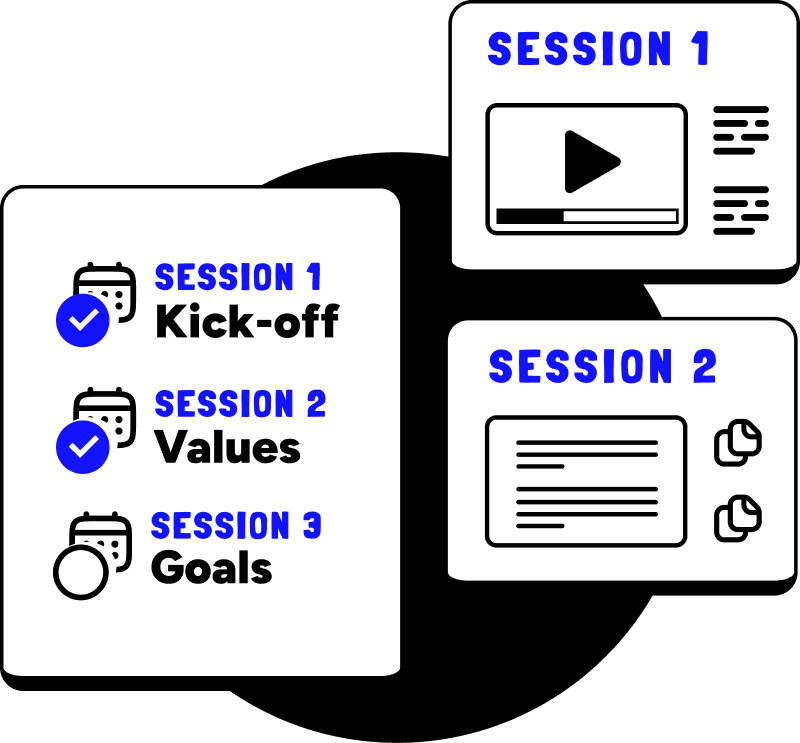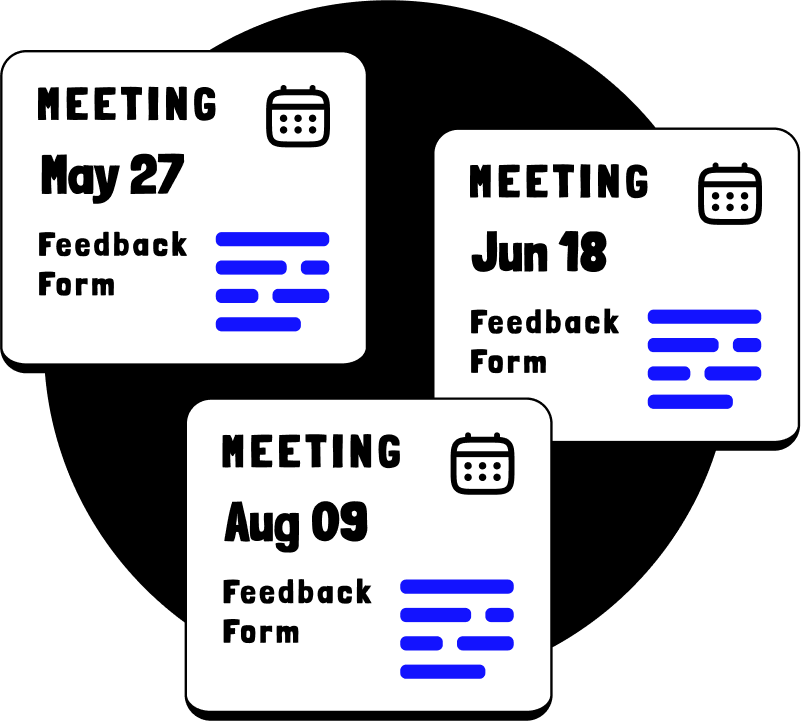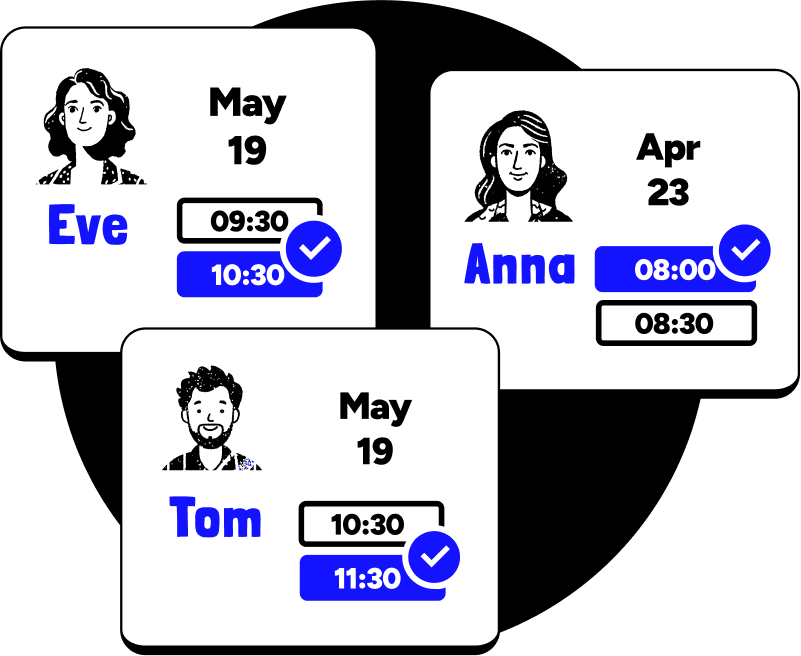Mentors and mentees follow a series of predefined sessions set by the program admin.
Each session includes specific topics, questions, and goals to guide the conversation.

Describe your ideal mentoring setup and we’ll help make it real! Or ask a question quickly.
Describe your ideal mentoring setup and we’ll help make it real! Or ask a question quickly.
Mentoring Program Models FAQ
What’s the Difference Between Structured and Freestyle Mentoring?
Structured Programs
-
The program manager defines the meeting flow, including topics, content, forms, and surveys.
-
Meetings follow a structured path with predefined themes and resources.
-
Example : If the program is designed with 5 meetings, mentees and mentors can schedule up to 5 meetings via the platform.
-
Each meeting may have different forms, questions, or content depending on the program design.
Freestyle Programs
Mentors and mentees freely schedule meetings without choosing a specific topic.
There is no meeting content — only a standard feedback form is provided.
The same feedback questions appear for every meeting.
There is no limit on the number of meetings they can create.
What Is Group Mentoring and How Does It Work?
Group mentoring is a model where multiple mentees are grouped together and meet with mentors.
Example : In a startup program, each startup team can be a group of mentees.
📅 If any mentee schedules a meeting, it’s created for the whole group. No approval is needed.
📩 All group members receive a calendar invite and can join the meeting and add notes.
⚖️ Everyone in the group has equal rights and access.
What Is the Difference Between Group and 1-on-1 Mentoring?
Group Mentoring
Group mentoring is a format where a mentor meets with a group of participants (e.g. a startup team) collectively. Instead of one-on-one conversations, the mentor engages with the team as a whole.
🔹 Team-based sessions:
Meetings are created for the entire group. If any member schedules a session, it appears on the group calendar—no extra approval needed.
🔹 Shared access:
All group members receive invites, can attend the session, and contribute notes.
🔹 Equal roles:
Founders and startup members have equal access to meetings and shared resources.
🔹 Startup context:
Perfect for incubators and accelerators where mentoring is structured around startup teams rather than individuals.
1-on-1 Mentoring
In this model, a mentor is paired with one participant and sessions are private and personalized.
🔸 Individual focus:
Meetings are scheduled for one mentee at a time. Other participants cannot view or join these sessions.
🔸 Personalized guidance:
The mentor tailors support based on the individual’s goals, skills, and development needs.
🔸 Private tracking:
Notes and feedback are exclusive to the mentor and the matched mentee.
Which One Should You Choose?
If your program is designed around startup teams and you’d like to track progress by team name, group mentoring is the ideal model.
For programs focused on personal development, career coaching, or individual growth, 1-on-1 mentoring is the better fit.
How Can Mentees Select Their Mentors?
You can choose how mentees select their mentors. There are 3 options:
1. Admin-approved:
- Mentees send requests.
- Only admins see and approve them.
- Mentors don’t get notifications.
2. Mentor-approved:
- Mentees send requests directly to mentors.
- Mentors decide who to accept.
3. No approval:
- Mentees are paired instantly after selecting a mentor.
🔧 You can also add custom rules—for example, prevent mentees from selecting mentors in their own department or hide certain mentors from certain mentees.
How Does Mentor–Mentee Matching Work?
Our mentoring software offers solutions for all matching methods →
Manual matching:
You can individually assign the mentees you want to the mentors of your choice.
Matching by uploading an Excel spreadsheet:
You can upload your matching list and pair all mentors and mentees in bulk.
Automatic matching:
You can enable automatic pairing of mentors and mentees based on rules you define. You can add an unlimited number of rules.
Can We Run Multiple Program Models at the Same Time?
You can create multiple programs.
This way, you can manage several programs with different models, settings, and contents simultaneously at no additional cost.






